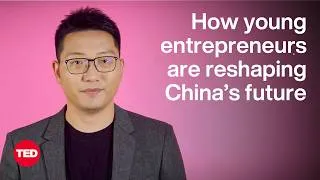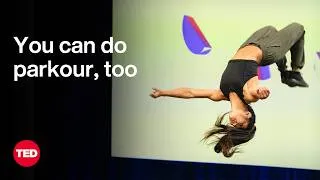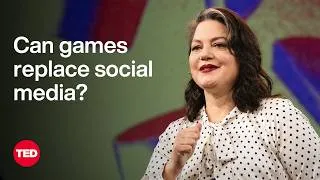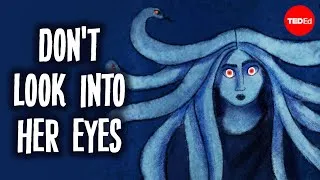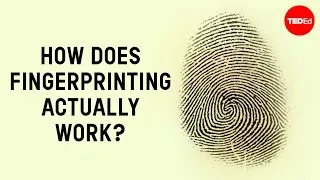Gyotaku: The ancient Japanese art of printing fish - K. Erica Dodge
鱼拓——拓印鱼的古老日本艺术 - 艾瑞卡·道奇 (K. Erica Dodge)
536,438 views ・ 2013-05-30
请双击下面的英文字幕来播放视频。
00:00
Translator: Andrea McDonough
Reviewer: Jessica Ruby
0
0
7000
翻译人员: Tuo Lin
校对人员: Jenny Yang
00:13
How big was that fish you caught?
1
13657
2088
你抓到的鱼有多大?
00:15
This big?
2
15745
1087
这么大?
00:17
This big?
3
17107
870
这么大?
00:18
This big?
4
18485
1638
还是这么大?
00:20
Without photographic evidence,
5
20123
1376
没有照片当证据
00:21
there's nothing that proves you caught a whopper,
6
21499
2331
你就没法证明你抓了一条大鱼
00:23
and that's been true since the dawn of fishing.
7
23830
2721
自人类捕鱼以来,一直都是如此
00:26
In fact, hundreds of years ago,
8
26551
2231
事实上,几百年前
00:28
long before photography could capture the moment,
9
28782
2497
早在照片可捕捉瞬间前
00:31
Japanese fishermen invented their own way
10
31279
2182
日本渔民就发明了
一套自己的方法
00:33
to record trophy catches.
11
33461
1967
来记录值得炫耀的战利品
00:35
They called it Gyotaku.
12
35428
2721
他们把这技术叫鱼拓(Gyotaku)
00:38
Gyotaku is the ancient art of printing fish
13
38149
2783
鱼拓
是把鱼拓印下来的古老艺术
00:40
that originated in Japan
14
40932
1627
发源自日本
00:42
as a way to record trophy catches
15
42559
1753
用来记录特殊的渔获
00:44
prior to the modern day camera.
16
44312
2390
起源比相机还早
00:48
Gyo means fish
17
48362
1597
Gyo 的意思是鱼
00:49
and taku means impression.
18
49959
2192
而 taku 的意思是拓印
00:52
There are several different stories about
19
52151
1893
关于鱼拓的由来
00:54
how Gyotaku came about,
20
54044
1779
有好几种不同说法
00:55
but it basically started with fishermen
21
55823
1534
但基本上起源于
00:57
needing a way to record the species and size
22
57357
2470
一百多年前
00:59
of the fish they caught over 100 years ago.
23
59827
3670
来记录抓到的鱼种及大小
01:03
Fishermen took paper, ink, and brushes
24
63497
2169
渔民会带着纸、墨汁和毛笔
01:05
out to sea with them.
25
65666
1377
一同出海
01:07
They told stories of great adventures at sea.
26
67043
3254
来讲述海上的伟大冒险故事
01:10
Since the Japanese revered certain fish,
27
70297
2167
因为日本人崇敬某些鱼类
01:12
the fishermen would take a rubbing from these fish
28
72464
2080
渔民会先将鱼拓印起来
01:14
and release them.
29
74544
2669
再把它们放走
01:17
To make the rubbing,
30
77213
857
要制作拓印
01:18
they would paint the fish with non-toxic sumi-e ink
31
78070
2607
渔民会先将鱼涂上无毒的墨汁
01:20
and print them on rice paper.
32
80677
2089
然后拓印在宣纸上
01:22
This way they could be released
33
82766
1743
这样就可以把鱼放回去
01:24
or cleaned and sold at market.
34
84509
2348
或是洗干净,再拿去市场卖
01:26
The first prints like this were for records only
35
86857
2643
像这张早期的鱼拓只是用来记录
01:29
with no extra details.
36
89500
1771
并没有额外的细节咨询
01:31
It wasn't until the mid 1800's
37
91271
1842
一直到十九世纪中期
01:33
that they began painting eye details
38
93113
1795
渔民才开始在拓印上
01:34
and other embellishments onto the prints.
39
94908
2590
画出眼睛的细节
及其他附加装饰
01:37
One famous nobleman, Lord Sakai, was an avid fisherman,
40
97498
3413
有位著名的贵族伯爵“酒井”
是狂热的捕鱼爱好者
01:40
and, when he made a large catch,
41
100911
1419
有一次他捕到了一条大鱼
01:42
he wanted to preserve the memory
42
102330
1702
他想保存
01:44
of the large, red sea bream.
43
104032
2290
这只又大又红的海鲷鱼的记录
01:46
To do so, he commissioned a fisherman to print his catch.
44
106322
3890
因此,他委托一位渔民帮他拓印
01:50
After this, many fisherman would bring
45
110212
2095
之后许多渔民就会带着
01:52
their Gyotaku prints to Lord Sakai,
46
112307
2291
他们的鱼拓来找酒井伯爵
01:54
and if he liked their work,
47
114598
1196
如果伯爵喜欢他们的作品
01:55
he would hire them to print for him.
48
115794
1891
就会雇用他们来帮忙制作鱼拓
01:57
Many prints hung in the palace during the Edo period.
49
117685
3799
江户时期
宫殿里挂着许多鱼拓
02:01
After this period, Gyotaku was not as popular
50
121484
2624
之后
鱼拓就不流行了
02:04
and began to fade away.
51
124108
2545
开始被淡忘
02:06
Today, Gyotaku has become a popular art form,
52
126653
2460
今天,鱼拓再度成为
一种流行的艺术形式
02:09
enjoyed by many.
53
129113
1294
收到许多人喜爱
02:10
And the prints are said to bring good luck to the fishermen.
54
130407
2669
而且据说鱼拓会为捕鱼者带来好运
02:13
But the art form is quite different than it used to be.
55
133076
2768
但这艺术形式和昔日有很大的不同
02:15
Most artists today learn on their own by trial and error.
56
135844
3543
许多现代艺术家在尝试、错误中学习
02:19
Before the artist begins to print,
57
139387
1989
艺术家在开始拓印前
02:21
the fish needs to be prepared for printing.
58
141376
2472
要先把鱼准备好
02:23
First, the artist places the fish
59
143848
2001
首先
艺术家把鱼放在
02:25
on a hollowed out surface.
60
145849
1668
一个凹陷的平面
02:27
Then the artist spreads the fins out
61
147517
1903
接着艺术家把鱼鳍展开
02:29
and pins them down on the board to dry.
62
149420
2060
用大头针固定在板子上风干
02:31
They then clean the fish with water.
63
151480
2384
接着他们用水清洗鱼
02:33
When it comes time to print,
64
153864
1484
要拓印时
02:35
there are two different methods.
65
155348
1968
有两种不同的方法
02:37
The indirect method begins with pasting moist fabric or paper
66
157316
3287
“间接法”
先将潮湿的布或纸张
02:40
onto the fish using rice paste.
67
160603
2503
用浆糊贴在鱼上
02:43
Then, the artist uses a tompo,
68
163106
2137
接着艺术家会用
“拓包”(tompo)
02:45
or a cotton ball covered in silk,
69
165243
1662
或者包了丝绸的棉球
02:46
to put ink on the fabric or paper to produce the print.
70
166905
3627
沾墨到布料或纸张上拓印
02:50
This method requires more skill
71
170532
1585
这个方法需要较高的技巧
02:52
and great care needs to be taken
72
172117
1724
也要非常小心的
02:53
when pulling the paper off the fish
73
173841
1769
将纸张和鱼分离
02:55
so the paper doesn't tear.
74
175610
3013
这样纸才不会破掉
02:58
In the direct method,
75
178623
968
而用“直接法”
02:59
the artist paints directly on the fish,
76
179591
2083
艺术家直接将鱼上墨
03:01
and then gently presses the moist fabric or paper into the fish.
77
181674
3915
然后轻轻地将潮湿的布或纸张
压在鱼身上
03:05
With both of these methods,
78
185589
1337
有了这两种方法
03:06
no two prints are exactly alike,
79
186926
1907
没有两张鱼拓会一模一样
03:08
but both reveal dramatic images of the fish.
80
188833
3089
但是都能生动的展现鱼的形象
03:11
For the final touch,
81
191922
1133
最后一步
03:13
the artist uses a chop, or a stamp,
82
193055
2168
艺术家会盖“印”(chop)
就是印章
03:15
and signs their work,
83
195223
1680
然后为作品签名
03:16
and can hold it up to say,
84
196903
1323
接着就可拿着说:
03:18
"The fish was exactly this big!"
85
198226
2893
“那条鱼就是那么大!”
New videos
关于本网站
这个网站将向你介绍对学习英语有用的YouTube视频。你将看到来自世界各地的一流教师教授的英语课程。双击每个视频页面上显示的英文字幕,即可从那里播放视频。字幕会随着视频的播放而同步滚动。如果你有任何意见或要求,请使用此联系表与我们联系。
